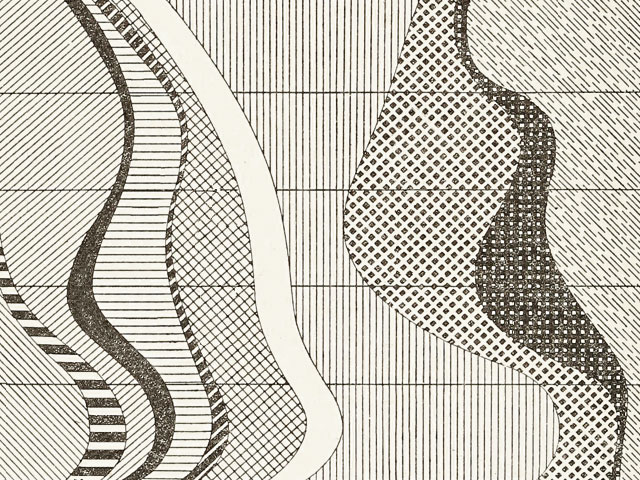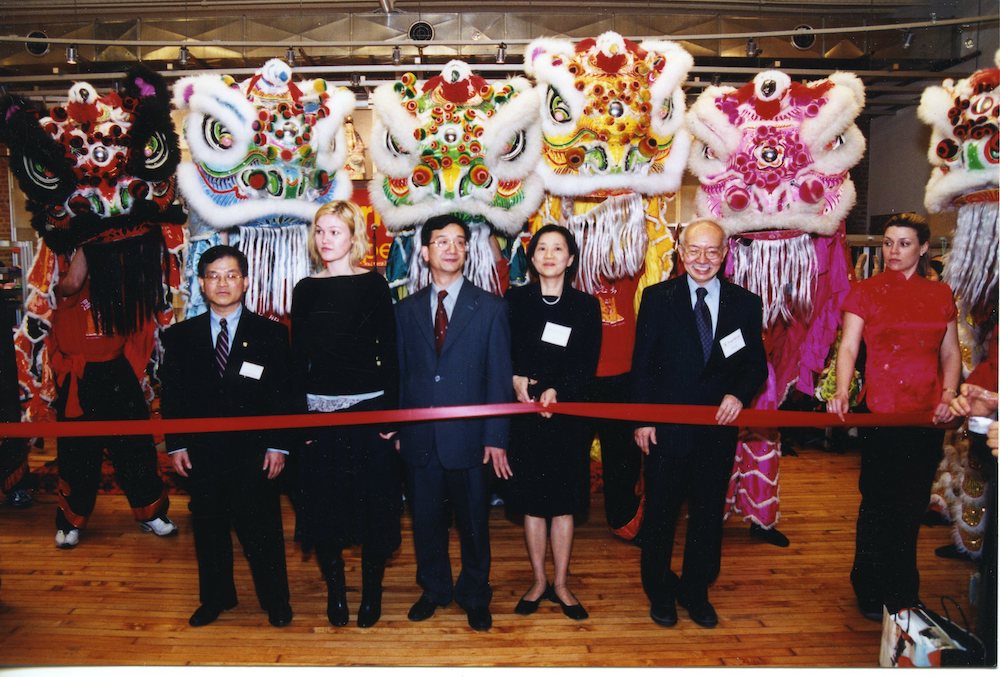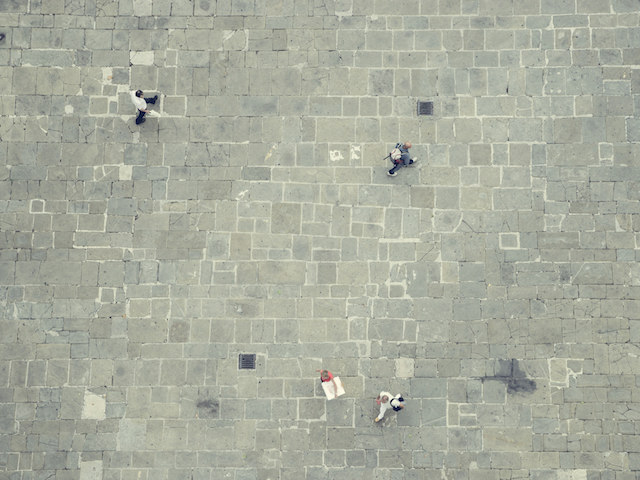Mapping displacement, resisting settler colonialism, assembling planes, flying south for the winter, and more.

October 28, 2016
In previous Keeping Tabs, you’ve travelled with us through city, trash, and thought — this week, join our lines of flight. As movements like #NoDAPL and #ChinatownIsNotForSale continue, cross over past and present with us to navigate the politics of movement. For this week’s roundup, we’re spanning American histories of anti-immigration and deportation through to processes of gentrification. Direct downward for your weekend reads!
Content warning in the following piece for racial slurs.
Exiled: The Anti-Immigrant Roots of Mass Deportation in Mexican and Japanese American Repatriation by Nina Wallace
On Densho, Nina Wallace maps the genealogies of contemporary American deportation tactics and the Illegal Immigration Reform and Immigrant Responsibility Act (IIRIRA), from the displacement of Indigenous populations in the 1830s to the deportations of Mexican and Japanese immigrants in the 1930s and 1940s.
IIRIRA applies to any non-citizen, including legal permanent residents, and lowers the bar for deportable offenses to minor, nonviolent crimes like drug possession or shoplifting. It can be applied retroactively, years after an individual has completed a prison sentence for their crime. Provisions for mandatory detention and fast-track deportation strip immigrants—even refugees applying for asylum—of their right to a court hearing. In cases that do make it to court, judges are prohibited from considering family ties, mental illness, abuse, fear of persecution, or any other mitigating factors during sentencing.
This story of immigrants being exiled to countries they left behind decades ago should set off alarms for anyone familiar with the “repatriation” of American and Peruvian Japanese during World War II. But these wartime deportations were not the first time the government attempted to remove an inconvenient immigrant population by force.
Why the future face of the Midwest looks like this Somali immigrant by Collier Meyerson
In Fusion, Collier Meyerson joins in conversation with filmmaker Musa Syeed on his new movie “The Stray” and Somali American experiences in Minnesota.
I think I was interested in telling the story in Minneapolis because there isn’t a lot known about it, and I think it being a Midwestern city, it has a different resonance. Everyone associates New York with immigrant stories, but telling the story in the heartland of America—a story about immigration—I think, points more towards the future of what America is now and what it’s going to look even more like in the future. Obviously, there’s this large Somali population, but there’s also this large population of Native Americans, there’s a large Hmong population. I was just curious to see how [Adan] could navigate all these communities, and where he could find opportunities for connection with all these different people.
#StandingRockSyllabus by NYC Stands with Standing Rock
Contributing to continuing movements of the Sacred Stones Camp, Red Warrior Camp, and the Oceti Sakowin Camp at Standing Rock, the NYC Stands for Standing Rock committee traces the histories of settler colonialism, institutionalized environmental racism, and resistance on Indigenous lands and of Indigenous peoples.
This syllabus project contributes to the already substantial work of the Sacred Stones Camp, Red Warrior Camp, and the Oceti Sakowin Camp to resist the construction of the Dakota Access Pipeline, which threatens traditional and treaty-guaranteed Great Sioux Nation territory. The Pipeline violates the Fort Laramie Treaty of 1868 and 1851 signed by the United States, as well as recent United States environmental regulations. The potentially 1,200-mile pipeline presents the same environmental and human dangers as the Keystone XL pipeline, and would transport hydraulically fractured (fracked) crude oil from the Bakken Oil Fields in North Dakota to connect with existing pipelines in Illinois. While the pipeline was originally planned upriver from the predominantly white border town of Bismarck, North Dakota, the new route passes immediately above the Standing Rock Sioux Reservation, crossing Lake Oahe, tributaries of Lake Sakakawea, the Missouri River twice, and the Mississippi River once. Now is the time to stand in solidarity with Standing Rock against catastrophic environmental damage.
Swoop and Rescue by Toni Mac
In response to police raids in London’s Chinatown and Soho neighborhoods, Toni Mac for Verso Books’ blog denounces the raids’ positioning as ‘saving’ sex workers, and emphasizes the violence and criminalization of anti-trafficking raids against migrant sex workers.
‘Operation Lanhydrock’ is reported to be a “proactive multi-agency” effort to tackle a long list of issues said to be plaguing the local community, including human trafficking, exploiting prostitution for gain, immigration offences, money laundering, and drug dealing. The Met has stated that the “aim of the operation is to identify, safeguard and remove victims of human trafficking, sexual exploitation and modern slavery offences”. But the Met (and the law) confuse the meanings of these terms. The person on the street would expect that a victim of these offences had been forced – yet the Modern Slavery Act of 2015 specifies that in the case of “trafficking”, for instance, “it is irrelevant whether the victim consents to the travel”. To be an undocumented migrant who sells sex is to be a victim under the law, irrespective of whether you see yourself that way.
Chinatown Is Not for Sale by Artists Space
Peter Kwong, Liz Moy, Margaret Lee, Juan Puntes, and Betty Yu discuss gentrification and the influx of artists in New York’s Chinatown at the Chinatown Is Not for Sale hosted by the Chinatown Art Brigade, Decolonize This Place, and Artists Space, now uploaded to YouTube.
The Anxious, Unfinished Story of Chinese-American Assimilation by Hua Hsu
In the New Yorker, Hua Hsu delves into the ongoing narrative of the Chinese American experience, and discusses Peter Ho Davies work. (Check out Lillian Li’s interview with Peter Ho Davies, now on the Margins!)
Each of these incidents, which probably could have happened at any time in the past fifty years, might have been lost in a more vigorous news cycle. But, taken as a whole, they were a reminder of something essential, a kind of invisibility that has never gone away, and the persistent feeling of resignation that it will always be so. It’s a feeling that inspires many to shout, so as to avoid being misunderstood, when given the chance to speak aloud. Sometimes history is a burden for writers of color—opportunities to convey meaningful visions of the past are so rare that they must, it sometimes seems, be rendered carefully and comprehensively. As I read “The Fortunes,” I wondered what someone unfamiliar with this history would make of a novel that was so meticulously and steadfastly Chinese-American—whether other readers would appreciate the allusions and subtle jokes. Could anyone outside this community possibly care? But then I realized that worrying about such things was conceding defeat. What makes “The Fortunes” so hopeful, the type of novel that could have only been written now, is its willingness to take liberties with that past—to rearrange its details and indulge in speculation, in order to help us imagine a different way forward.
The Aviation Aspirations of Chinese Farmers by Claire Voon
In Hyperallergic, Claire Voon potrays the innovative spirit of self-employed Chinese farmers, as told through the lens of photographer Xiaoxiao Xu’s photo book.
Aeronautics in the Backyard is divided into sections dedicated to each aeronaut. Accompanying Xu’s photographs of them, tinkering on contraptions in all stages of completion, are first-person narratives as well as detailed pencil drawings of airplane and helicopter designs that speak further to the men’s visions.
Their stories are candid and touching. Each vignette relays how much they’ve invested in these side passions; what they’ve lost and gained; how their families disapprove of their interests. Some have achieved flight many times over; others have suffered accidents with severe, lasting consequences. We learn how they use their available resources to the best of their advantage: one construction worker built his first airplane on his balcony, while Yuan recalls how he bought a pigeon from a market and based a machine on its anatomy.
Interspecies Communication by Janice Lee
Janice Lee finds comfort in the birds following her mother’s death in this transcription of the introduction to an Open Press panel, on Entropy. (Read Lee’s note on HTML Giant for more on the birds, along with horses, wasps, transit, and communication.)
I remember in a parking lot after eating breakfast, several pigeons waddling around slowly, their heads cocking back and forth like a continuous bobbing or nodding to a beat that only the birds could hear. I thought they were so funny, waddling around like that, like they didn’t have anything else to do. One of the pigeons started making its way toward where I was standing, saw me standing there, saw me take a few steps closer to it, and then hurriedly waddled under a car. I tried to cut it off, tiptoed around to the other side of the car. It saw me coming and reversed its steps. I tried to hurry back too. Eventually I scared off all the pigeons. It seemed actually that they were trying to, in a strange illogical way (or a very logical one), reunite with each other, get closer to each other. They were waddling in strange patterns towards one another, and my human curiosity and strange desire to get closer to them (that desire to get closer only and inevitably increasing our distance) was splitting them apart. The price of longing.
Content warning in the following piece for flashing images.
New Fiction By Alice Sola Kim: “Successor, Usurper, Replacement” by Alice Sola Kim
Alice Sola Kim weaves an unnerving and fantastical story of a group of writer friends drinking and congregating during a rainstorm, featured on Buzzfeed.
Lee buzzed her in. She heard the distant shunk of the elevator below, then the doors slid open. The elevator opened directly into Lee’s apartment, as it did for every unit in the building, which was supposed to be a fancy amenity but felt more like having a giant hole that led right into your guts. Not that kind of hole.
So, right away the girl was in Lee’s apartment. No time to think about whether it was the right choice or not to let her in, although, why wouldn’t it be? The rain had reduced the girl to the purest essence of herself, hair plasticked to her head, clothes and even skin seeming to adhere more tightly to her skeleton. She had long, thick bangs. Although the rain had separated them into chunks, the bangs covered her eyes so perfectly that you only knew she had eyes because you assumed she had eyes, why wouldn’t she have eyes, but —
— did she have eyes?



